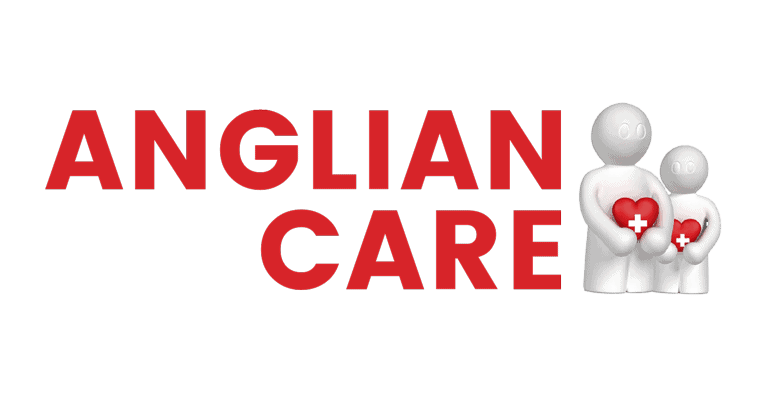The Care Quality Commission (CQC) is crucial for ensuring that health and social care services uphold safety and quality standards. It conducts routine inspections, evaluating services based on five key areas: safety, effectiveness, caring, responsiveness, and leadership. After inspections, the CQC assigns performance ratings, helping to identify strengths and areas needing improvement. Public feedback plays a critical role, ensuring that patient perspectives are valued. The CQC also takes enforcement actions when necessary to promote compliance and service improvement. Understanding how the CQC operates can provide insights into its significant impact on care quality and safety across the country.
Overview of the CQC
You might wonder how the CQC maintains its focus on quality. They conduct regular inspections to evaluate services against fundamental standards. These inspections are essential for ensuring safe and effective care in care homes and are linked to care home performance ratings, which helps in identifying areas for improvement. After these inspections, the CQC publishes ratings—Outstanding, Good, Requires Improvement, and Inadequate—to inform you about the quality of care available. These ratings empower you to make informed decisions about the services you or your loved ones may need.
Public engagement is a key aspect of the CQC's mission. They actively seek feedback from patients and service users, ensuring that your voice is heard in the evaluation process. This commitment not only helps protect the rights of vulnerable individuals but also promotes continuous improvement in health and social care services through accountability, as highlighted by monitoring through feedback.
Purpose and Objectives
- Regular Inspections: The CQC conducts routine inspections of various health and social care services. These inspections focus on five critical questions: Is the service safe? Is it effective? Is it responsive? Is it caring? Is it well-led? The CQC's role is essential in the context of the Health and Social Care Act 2012, which emphasizes quality improvement and patient-centered care.
- Monitoring Compliance: Another objective is to enforce compliance with regulations, including the Mental Health Act. This guarantees that all providers follow the necessary guidelines to safeguard patient rights and care quality.
- Encouraging Improvement: Through its monitoring and inspection activities, the CQC aims to encourage continuous improvement in care services. By holding providers accountable for maintaining established quality and safety standards, it fosters a culture of excellence in care delivery. Additionally, the CQC publishes inspection reports and performance ratings. This transparency enhances public awareness and trust, helping you make informed decisions about your care options. Ultimately, the CQC's purpose and objectives revolve around guaranteeing that everyone receives safe, high-quality care tailored to their needs.
Regulatory Framework
As part of its role, the CQC registers care services and evaluates their adherence to established quality standards. These standards focus on key areas like safety, effectiveness, and responsiveness, guaranteeing that you receive the care you deserve. The CQC plays an essential role in promoting accountability and compliance among care providers, as outlined in the importance of legislation within the health and social care landscape. Regular inspections and assessments are conducted to monitor compliance, and when providers fall short, the CQC can enforce actions like fines or service closures.
By promoting quality assurance, the CQC encourages a culture of continuous improvement within the healthcare sector. They publish inspection reports and ratings, which not only inform the public but also hold care providers accountable for their performance. This transparency allows you to make informed choices about your care options.
Ultimately, the CQC's regulatory framework is designed to safeguard your health and well-being. By enforcing compliance and encouraging high-quality care, they work to guarantee that health and social care services across England meet the standards you rely on. Through their efforts, you can feel more confident that the services you use are safe and effective, fostering trust in the healthcare system.
Inspection and Monitoring
When it comes to inspecting and monitoring health and social care services, the Care Quality Commission (CQC) uses a structured approach to guarantee quality and safety. You'll find that they rate services based on five key questions, and they also take enforcement actions if providers don't meet essential standards. Understanding these methods can help you appreciate how the CQC maintains care excellence across the board.
Inspection Methods Overview
In the domain of health and social care services, the Care Quality Commission (CQC) employs a variety of inspection methods to secure quality and safety. These methods guarantee that care providers meet essential standards and keep patients safe. The CQC utilizes different inspection techniques, categorized primarily into two types:
- Comprehensive Inspections: These occur every three years and evaluate all key areas of service.
- Focused Inspections: These target specific issues or follow up on previous concerns and can be either announced or unannounced.
The inspection frequency is designed to maintain oversight and ensure ongoing compliance. During inspections, you'll notice that CQC staff engage with both patients and staff, gathering firsthand insights about the care being provided. This direct interaction helps create detailed reports that evaluate safety, effectiveness, and responsiveness to user needs.
To enhance transparency and accountability, the CQC publishes these inspection reports, which classify services as Outstanding, Good, Requires Improvement, or Inadequate. If a provider fails to meet essential standards, the CQC can take enforcement actions, including fines or even closures, ensuring that quality care remains a priority.
Rating System Explained
Thorough inspections occur every three years, focusing on five key questions related to safety, effectiveness, caring, responsiveness, and leadership. These questions guide inspectors in evaluating each service accurately. In addition to the regular inspections, focused inspections may happen to address specific issues or follow up on previous ratings. These can be unannounced, and the team composition varies depending on the inspection's focus.
The CQC also guarantees that performance ratings reflect the experiences of various population groups. By aggregating these ratings, they provide a complete view of a service's performance. Inspection reports are published online, offering transparency and allowing the public to make informed choices about their care options based on the ratings and performance assessments.
Enforcement Actions Taken
- Warning Notices: The CQC can issue formal warnings, alerting providers to specific non-compliance issues that need urgent attention.
- Fines: In some cases, the CQC imposes financial penalties to encourage compliance measures and deter future violations.
- Registration Actions: For severe breaches, the CQC may suspend or cancel a provider's registration, which can lead to the closure of non-compliant services.
Regular inspections, both announced and unannounced, help the CQC identify any issues early. They publish detailed inspection reports, enhancing transparency and accountability in the care sector. Additionally, through ongoing monitoring and follow-up inspections, the CQC guarantees that previously identified issues are effectively addressed. This commitment to enforcement actions not only protects individuals but also promotes a culture of safety and quality in care services across the board.
Ratings and Accountability
By publishing inspection reports and ratings, the CQC enhances transparency. This transparency allows you to make informed choices about care services, fostering public trust in the system. When you see a service rated as Inadequate, it's essential to know that they must demonstrate improvement within six months. If they fail to do so, they risk being placed in special measures, which could lead to registration cancellation. This process guarantees that care providers remain accountable for their performance. Maintaining dignity in care is fundamental for effective service delivery, as it guarantees individuals feel valued and respected. The CQC's continuous monitoring of care providers also plays a significant role in service improvement. Any changes in compliance status are communicated publicly, reinforcing trust in care services. You can rest assured that the CQC is working to maintain high standards, and when you choose a service, you're relying on their commitment to quality and safety. Overall, the CQC's ratings and accountability measures guarantee that health and social care services continually aim to improve, ultimately benefiting everyone who relies on them.
Future Challenges and Developments
As the Care Quality Commission (CQC) looks ahead, it's important to recognize the challenges posed by potential worker shortages, especially in the wake of Brexit. You'll notice that the need for digital transformation is also vital, with many care providers still relying on outdated methods. Addressing these issues will be essential for maintaining quality care in a changing environment.
Worker Shortages Post-Brexit
To address these challenges, consider focusing on the following strategies:
- Enhancing Worker Retention: Implement programs that support staff well-being and career development, helping to keep your current team engaged and motivated.
- Attracting New Talent: Use targeted recruitment campaigns to draw in individuals who may not have considered a career in care, showcasing the benefits and rewards of the profession.
- Leveraging Technology: Explore tools that streamline administrative tasks, allowing care staff to focus more on patient care, which can improve job satisfaction.
With an estimated need for 2 million extra carers by 2025, it's vital to tackle these worker shortages. By prioritizing worker retention and innovative staffing strategies, you can help stabilize the care sector for the future.
Digital Transformation Necessities
Additionally, the lack of central contingency planning post-Brexit raises concerns about supply chain vulnerabilities, making digital integration even more essential. By streamlining processes through technology, you can improve workforce management, allowing for better allocation of resources and personnel. This not only enhances service delivery but also helps attract and retain staff in a competitive environment.
Public support for increased funding indicates a collective willingness to invest in these digital advancements. Embracing digital transformation isn't just about keeping up with trends; it's about ensuring the sustainability and quality of social care services for everyone involved. By prioritizing digital records, you can facilitate a smoother, more efficient care system that truly meets the needs of the community.





